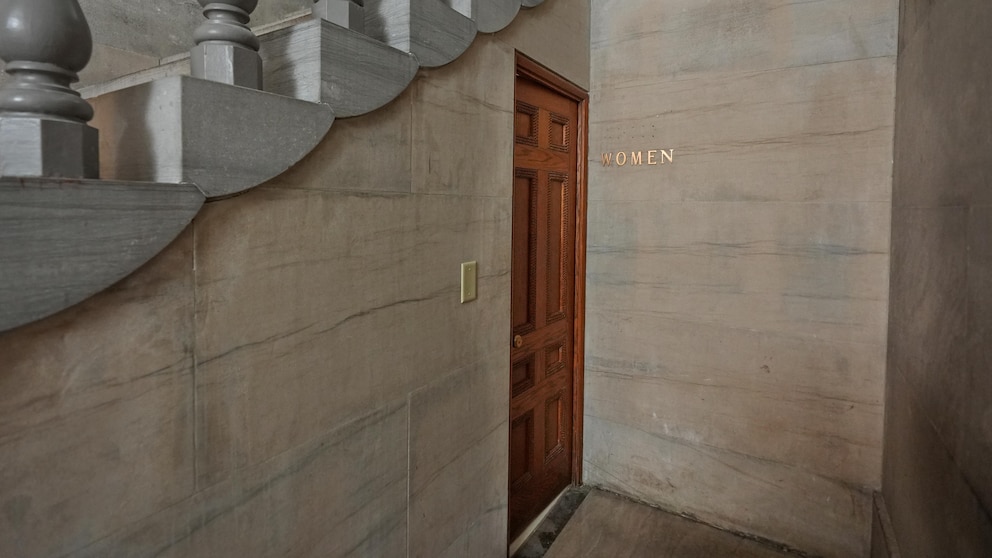
Statehouses across the U.S. are addressing long-standing bathroom disparities for female lawmakers. For female state lawmakers in Kentucky, choosing when to go to the bathroom has long required careful calculation.
There are only two bathroom stalls for women on the third floor of the Kentucky Statehouse, where the House and Senate chambers are located. Female legislators — 41 of the 138 member Legislature — needing a reprieve during a lengthy floor session have to weigh the risk of missing an important debate or a critical vote.
None of their male colleagues face the same dilemma because, of course, multiple men’s bathrooms are available. The Legislature even installed speakers in the men’s bathrooms to broadcast the chamber’s events so they don’t miss anything important.
In a pinch, House Speaker David Osborne allows women to use his single stall bathroom in the chamber, but even that attracts long lines.
“You get the message very quickly: This place was not really built for us,” said Rep. Lisa Willner, a Democrat from Louisville, reflecting on the photos of former lawmakers, predominantly male, that line her office.
The issue of potty parity may seem comic, but its impact runs deeper than uncomfortably full bladders, said Kathryn Anthony, professor emerita at the University of Illinois at Urbana-Champaign’s School of Architecture.
“It’s absolutely critical because the built environment reflects our culture and reflects our population,” said Anthony, who has testified on the issue before Congress. “And if you have an environment that is designed for half the population but forgets about the other half, you have a group of disenfranchised people and disadvantaged people.”
There is hope for Kentucky’s lady legislators seeking more chamber potties. A $300 million renovation of the 155-year-old Capitol — scheduled for completion by 2028 at the soonest — aims to create more women’s restrooms and end Kentucky’s bathroom disparity.
The Bluegrass State is among the last to add bathrooms to aging statehouses that were built when female legislators were not a consideration.






